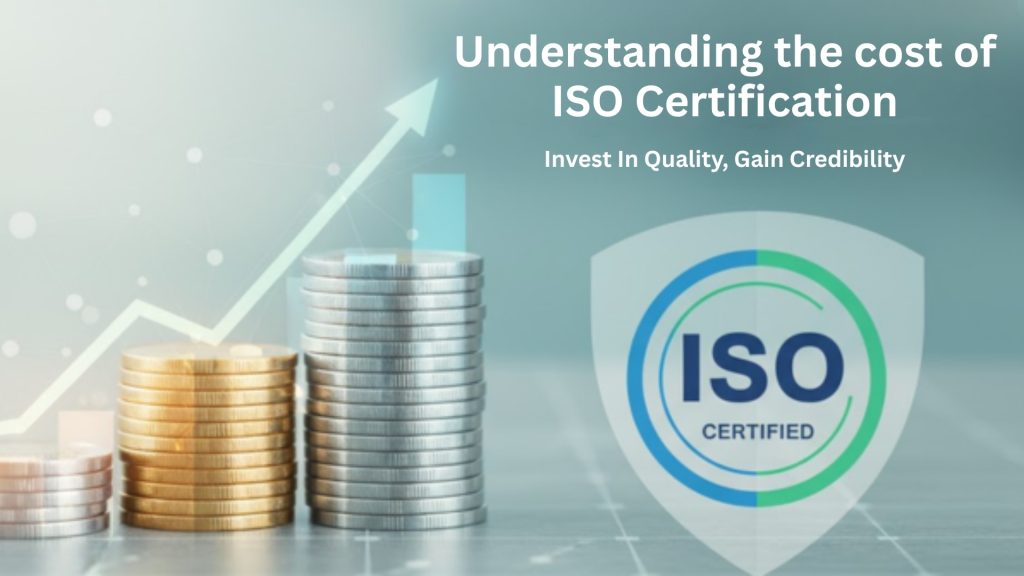In today’s competitive global market, maintaining quality, safety, and efficiency is critical for every organization. ISO certification helps achieve these goals through internationally recognized standards. Whether it’s manufacturing, healthcare, education, or IT, adhering to ISO standards demonstrates an organization’s commitment to quality and consistency.
ISO certifications are not just badges—they reflect how systematically an organization functions. They show that your operations follow internationally accepted procedures and protocols, enhancing your reputation among clients, employees, and regulatory bodies.
What is ISO Certification?
ISO stands for the International Organization for Standardization. It develops global standards that ensure quality, safety, and efficiency across various industries.
When an organization receives ISO certification, it means that its management systems, processes, or services comply with the relevant ISO standard. For instance, ISO 9001 is a widely used standard for Quality Management Systems (QMS).
ISO certification ensures that a company has consistent, well-documented procedures and a commitment to continual improvement.
What is ISO 9001 and Why is it Important?
ISO 9001 is the most recognized and implemented quality management standard in the world. It helps organizations meet customer expectations, comply with regulations, and continually improve operations.
Why ISO 9001 is Important:
- It sets a structured framework for managing quality.
- It helps in identifying risks and opportunities early.
- It enhances customer satisfaction by improving service delivery.
- It promotes a culture of continuous improvement.
Organizations certified to ISO 9001 demonstrate their focus on meeting quality requirements while striving for improvement.
Key Benefits of ISO Certification
ISO certification offers several measurable and long-term benefits that go beyond compliance. Let’s explore the most significant ones:
1. Enhanced Quality and Consistency
ISO standards are built around quality management principles. When these are followed, businesses produce consistent results, reduce variability, and improve product or service quality.
2. Increased Customer Satisfaction
Certified organizations often report higher levels of customer satisfaction. Consistent quality and reliable processes lead to better client experiences, repeat business, and customer loyalty.
3. Improved Efficiency and Productivity
Following ISO standards helps streamline operations, eliminate waste, and reduce unnecessary steps in processes. This results in time and cost savings.
4. Global Recognition
ISO certification is recognized across the world. It signals that an organization meets international standards, which is crucial when expanding into global markets or dealing with international clients.
5. Employee Engagement
A well-defined management system encourages a structured work environment. Employees understand their roles better, take ownership of processes, and contribute to improvements.
6. Informed Decision-Making
The ISO framework promotes the use of data for decisions. Organizations are encouraged to monitor performance, analyze outcomes, and use that insight to make better choices.
Benefits of ISO 9001 Certification
The ISO 9001 standard is widely adopted due to its universal applicability across sectors. Here’s why it’s so valued:
- Customer Focus: The standard prioritizes customer needs and ensures services meet expectations.
- Process Approach: It encourages a systematic approach to management and consistent outcomes.
- Improved Risk Management: Helps identify, assess, and address potential risks early.
- Stronger Supplier Relationships: Encourages transparent, performance-based supplier management.
- Evidence-Based Decisions: Promotes data analysis and fact-based strategies.
Implementing ISO 9001 helps organizations align their operations with global best practices, laying a strong foundation for long-term growth.
Why ISO Certification Matters in Today’s World
With rapidly changing markets, rising customer expectations, and a dynamic regulatory environment, organizations need a reliable framework to adapt and improve. ISO certification provides that framework.
By following ISO standards, businesses can:
- Stay compliant with industry and regulatory requirements.
- Gain a competitive edge in domestic and international markets.
- Foster a culture of continuous improvement.
- Manage environmental, safety, and information security concerns efficiently.
ISO Certification Process (Universally Applicable)
While the specific requirements may vary depending on the ISO standard being implemented, the process of certification generally follows these universal steps:
Step 1: Understanding the Standard
Organizations begin by understanding the standard’s requirements and how they apply to their specific processes and industry.
Step 2: Gap Analysis
This step involves evaluating current processes against the standard’s requirements to identify areas that need improvement.
Step 3: Implementation
Changes are made to align processes, documentation, and records with the standard. This includes setting up procedures, conducting training, and assigning responsibilities.
Step 4: Internal Audit
A thorough internal review is carried out to ensure all requirements are met and the system is functioning as intended.
Step 5: Management Review
Senior leadership evaluates audit findings and overall performance to ensure the system is effective and aligned with business goals.
Step 6: Certification Audit
An external certification body performs a detailed audit to verify compliance with the ISO standard.
Step 7: Continuous Improvement
After certification, regular monitoring, internal audits, and reviews help ensure ongoing compliance and improvement.
Long-Term Impact of ISO Certification
The value of ISO certification extends beyond the initial achievement. It creates a cycle of planning, execution, review, and improvement. Organizations that maintain ISO standards experience:
- Lower operational costs due to reduced errors and waste.
- Better stakeholder relationships.
- Stronger business continuity.
- More transparent operations.
- Improved regulatory readiness.





